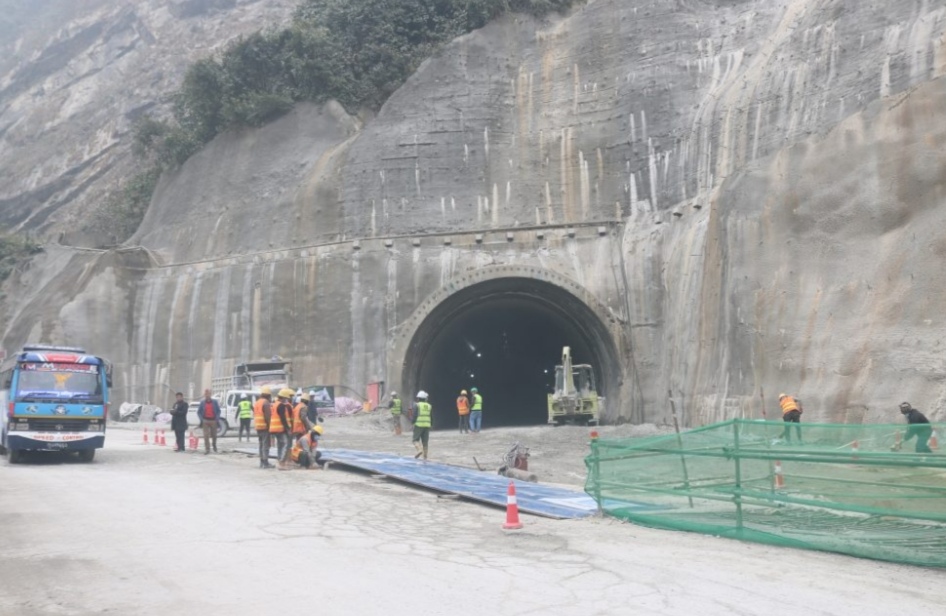Butwal, January 24, 2025
The Siddhababa Tunnel, a National Pride Project, achieved a major milestone today with the breakthrough of its main tunnel. This marks a significant step in ensuring safe and reliable transportation along the highly landslide-prone Butwal-Tansen section of the Siddhartha Highway.
Prime Minister KP Sharma Oli officiated the final breakthrough ceremony, accompanied by Deputy Prime Minister and Finance Minister Bishnu Prasad Paudel, and Minister for Physical Infrastructure Devendra Dahal. The project aims to address the chronic landslide challenges of this region, where landslides pose year-round risks, including loss of lives and property.
A Safer Future for Transportation
The 1,126-meter-long tunnel starts near the Upper Siddhababa Temple and bypasses one of Nepal’s most hazardous road sections. Constructed by China State Construction Engineering Corporation at a cost of NPR 7.34 billion, the project is set for completion by 2083 BS (2027 AD). According to Project Chief Krishna Raj Adhikari, all three bypass tunnels within the main structure have already been completed, ensuring additional safety and emergency exit points.
The tunnel construction, initiated in late 2079 BS (2023 AD), represents a collaborative effort, with 150 workers, including 40 skilled Chinese and Nepali personnel, working daily on tasks like secondary support and structural reinforcement.
Engineering Excellence and Design Innovation
The tunnel was designed using the New Austrian Tunneling Method (NATM), an advanced engineering approach ideal for Nepal’s challenging topography. In addition to the tunnel itself, slope protection measures and a 3,500-meter rock net will be installed on both ends to secure high-risk zones. Engineer Srijesh Paudel highlighted that slope protections extending up to 35 meters above road level will further enhance safety.
Transforming Connectivity in the Region
Upon completion, the Siddhababa Tunnel will significantly ease travel between Lumbini and Gandaki provinces, improving connectivity to hilly districts like Palpa, Gulmi, Syangja, Baglung, and Parbat. It will reduce travel time, ensure year-round access, and boost regional development by linking vital economic hubs.
The Genesis of the Project
The project was conceptualized following a 2075 BS (2018 AD) survey by the Swiss Agency for Development and Cooperation (SDC), which identified a 2.7 km stretch along the Siddhartha Highway as high-risk. This led to the decision to construct the tunnel, which bypasses areas where traditional slope protection methods proved infeasible.
Parallel Road Upgradation Initiatives
On the same day, Prime Minister Oli laid the foundation stone for the Butwal-Gorusinghe Road Upgradation Project under the East-West Highway. This 50 km stretch will feature four-lane and six-lane roads with service lanes, underpasses, and overpasses in urban and semi-urban areas. The NPR 6.3 billion project is expected to enhance the region’s infrastructure without disrupting existing traffic.
A Sustainable Vision for Nepal
These projects exemplify Nepal’s commitment to sustainable development and infrastructure resilience. The Siddhababa Tunnel, in particular, stands as a testament to the country’s efforts to mitigate environmental risks while ensuring economic progress.
Ecosphere News will continue to monitor and report on these groundbreaking initiatives that promise to transform Nepal’s infrastructure landscape.